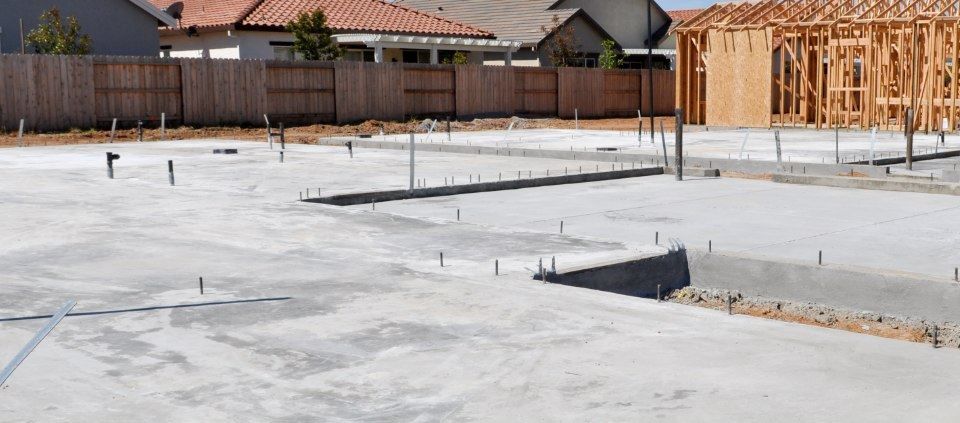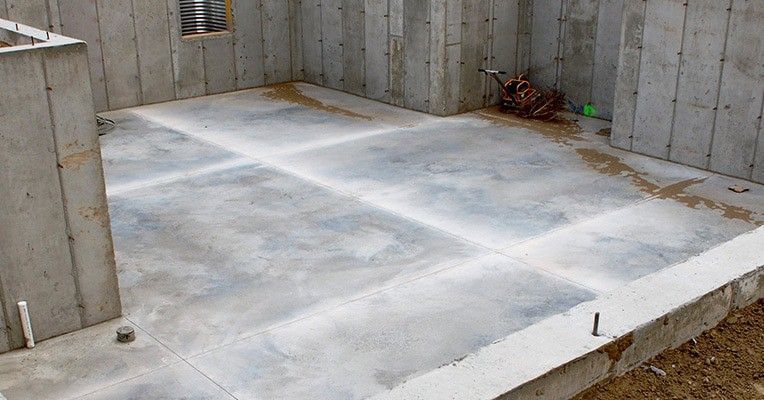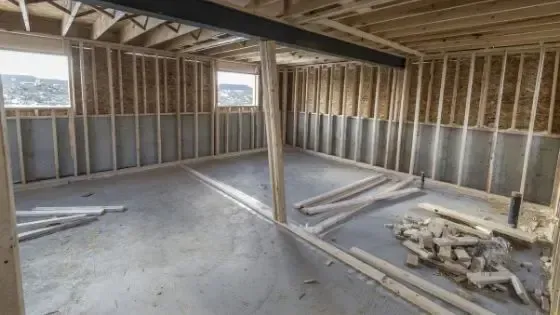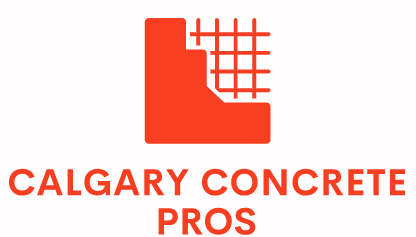Calgary Concrete Pros
Concrete Foundation Calgary
If you're a homeowner, then you know that there are a lot of things to consider when it comes to maintaining your property. Few things are more important then the foundation of your home. This needs to be done correctly the first time, because no one wants foundation repairs in the future One of the most important aspects of home ownership is having a strong foundation. So, if you're thinking about building a new home or replacing your old foundation, be sure to read on! When it comes to concrete, you want the job done right. At Calgary Concrete Pros, we have years of experience in all aspects of concrete work, from big projects like foundations to small projects like patios. We'll make sure your project is done correctly and to your specifications.
What is a Foundation?
A foundation is simply the lowest load-bearing part of your home. It serves three main purposes:
- It bears the weight of the entire house, transferring the force through to the ground beneath. For this reason, most (though not all) foundations are made of concrete and dug into the earth for added stability.
- It essentially holds your house in place, acting as an anchor between the frame (the walls, ceilings, etc.) and the ground below. In the event of natural disasters (such as earthquakes, hurricanes and tsunamis) or more routine adverse weather conditions (such as floods, wind, and frost-heave) your foundation stops your home from being washed or blown away.
- Finally, a well-laid foundation can help waterproof your property and prevent groundwater from rising into the lower reaches of your home.
The majority of foundations in Canada are made primarily of concrete. Depending on the design, it can be poured concrete walls, a concrete pad, concrete pillars, or insulated concrete forms. Less common materials include stones, wood, or metal pilings. Rather than focusing on what a foundation is made of, foundation types are usually categorized based on the form they take — which can be very different from one another.

Get Instant Quote

The Most Common Types of Concrete Foundation
There are three main types of concrete foundations: slab-on-grade, crawl space, and basement. Each type has its own set of pros and cons that you should consider when making your decision.
Slab-on-Grade Foundation
A slab-on-grade foundation is a solid concrete slab that is poured directly on the ground. This type of foundation is typically used in climates where the ground does not freeze. The slab is usually 4 to 6 inches thick and reinforced with steel rebar or wire mesh.
Pros
- Cost: Generally, slab foundations are the most affordable option when it comes to foundation choices.
- Low Maintenance: Slabs require the least amount of maintenance among all foundation types, adding to their price attractiveness.
- Speed:
Slabs are less time-consuming and laborious to construct, resulting in lower expenses (for you) and possibly faster completion times.
Cons
- Costs of Repairs That May Be Extremely High: Foundation repair will be expensive since plumbing systems are installed BELOW the slab, forcing you to first break through the concrete slab in order to access them. The necessity to get below your slab is increasingly unlikely as builders utilize cutting-edge technology like pex plumbing systems, which are increasingly used.
- Bad Weather: Slabs do not provide much protection to your home during storms and other severe weather conditions.

Basement Foundation
A basement foundation is the most expensive and most permanent type of foundation. It is typically 8-10 feet tall and has walls made of concrete, brick, or stone. A basement foundation provides the most headroom and is the best option if you plan on finishing your basement.
Pros
- Lower-Cost Square Feet: You could argue that the biggest perk to having a basement foundation is the extra square footage. Plus, this footage costs way less per square foot than if you were to add it elsewhere in your home.
- Seasonal Living Space: Small homes are often packed with people, requiring extra space outside the house to feel comfortable. By adding a finished basement, you can have an energy-efficient living area that is great for all seasons. You will stay warm during winter and cool in summer while using less energy overall.
- Easy-Access for Repairs: It goes without saying that it's more convenient (and less expensive) for repairmen to make repairs while standing upright rather than crawling through a crawl space or digging into a slab.
- Protection from Storm: Basements provide a great space for you to take shelter from bad weather while also serving as a solid foundation for your home.
Cons
- High Foundation Cost: The most expensive foundation type of the three is a basement, which is naturally the case. If you want to finish that room, it's even more so. Even then, that finished basement square footage will almost certainly be the least costly in the entire house.
- Prone to Flooding: Without a sump pump, your basement is at risk of suffering from water damage due to flooding. The best way to prevent this from happening is by having battery backups, generators, or water-flow backups in place. However, the most effective means of ensuring that your basement stays dry is by making sure there is a natural drainage path present.
- Inadequate Natural Light:
If your basement isn't a walkout, you'll have to get creative with how you bring light into the space.
Crawlspace Foundation
A crawlspace foundation is similar to a pier and beam foundation, but it consists of a crawlspace instead of a basement. A crawlspace is a small space between the ground and the first floor of a house that is typically only large enough for a person to crawl through.
Pros
- Accessible Utilities: The biggest drawback to having a slab foundation is that it's difficult to access your home's wiring, piping, and ductwork. Having a crawl space makes easy repairs and future upgrades possible.
- Warmer Floors: Unlike a slab foundation, the first floor of a house built on a crawl space does not have the same concrete feeling. Because the crawl space is conditioned, the floors tend to be warmer.
Cons
- Prone to Moisture: Though you may have installed a state-of-the-art vapor barrier, mold and fungi can still grow in your crawl space. Be sure to check your crawl space regularly for any indications of moisture problems. However at Calgary Concrete Pros, our conditioned crawl spaces help keep moisture at bay.
- Little Protection from Storms: Much like slab foundations, crawl spaces offer your home little-to-no protection from harsh weather conditions.
You can choose whether of these three types of concrete foundation you want for your home. Hiring Calgary Concrete Pros will ensure that your foundation is properly made and will last for many years.
Deep vs. Shallow Commercial Foundations
There are two main classifications of structural foundations:
Shallow Foundation
Shallow foundations are constructed close to the earth’s surface at shallow depths. While deep foundations transfer loads to subsurface layers, shallow foundations transfer the structure’s weight directly to the earth at a surface level. A foundation is considered shallow when its width exceeds its embedment depth.
Builders generally use shallow foundations for lightweight structures, such as low-rise commercial buildings and one- or two-story homes. These foundations are quicker and less costly to install than deep foundations.
Some common types of shallow foundations are:
- raft
- slab
- spread footing
- crawl space foundations.
Deep Foundation
Unlike their shallow counterparts, deep foundations are built at higher depths and transfer loads to deep rock strata underground. Builders use deep foundations when the surface soil’s load capacity is too low to support the structure. These foundations are cast, driven or bored into place for maximum stability. They are deeper than they are wide — their depth-to-width ratios usually exceed 4 to 5.
Deep foundations are normally used for:
- Tall or large commercial buildings
- Bridges
- Building sites with weak soil conditions
What is foundation repair
Foundation repair is fixing foundation that has settled (downward movement) or heaved (upward movement). This is done through various stabilization, lifting, and leveling solutions depending on the source of the problem.
How do I know If I need foundation repair?
Here are some signs your foundation may need to be repaired:
Cracks appear in the foundation or concrete slabs.
Your basement has leaks or rotting walls.
Basement walls are bowing or bulging on the inside or outside.
Your interior walls or ceilings have cracks in the drywall.
Your chimney is cracked or leaning.
Your windows or doors are sticking and won’t close properly.
Left untreated, foundation issues can get worse, resulting in major structural problems for all elements of your home.
How often does concrete need maintenance?
Maintenance is usually performed every 1-2 years. Depending on the type of sealer used, it may need to be applied anywhere between once every 1-2 years and once every 5-10 years or more.
How many days does it take for concrete foundation to cure?
Concrete takes about 28 days to be fully cured. Differences in weather, mix, and other items can slightly change the timeframe of the curing period. The general rule of thumb for concrete drying is 28 days to dry for every 1 inch of slab thickness.
What is the life expectancy of a concrete foundation?
Concrete foundations usually last around 80-100 years.
What are signs of foundation problems?
Signs of foundation problems include:
Cracks in the foundation or concrete slabs
Leaks or rotting walls in the basement
Bowing or bulging basement walls
Cracks in the drywall of interior walls or ceilings
A cracked or leaning chimney
Doors or windows that stick or won't close properly
Can you pour concrete over an existing foundation?
Yes, you can pour concrete over concrete this is known as a concrete overlay.
